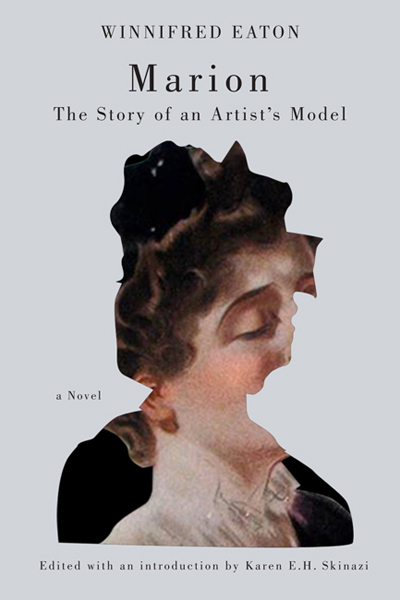“Citizen Sure Thing” or “Jus’ Foreigner”?: Half-Caste Citizenship and the Family Romance in Onoto Watanna’s Orientalist FictionPosted in Articles, Asian Diaspora, Literary/Artistic Criticism, Media Archive on 2013-04-20 16:06Z by Steven |
Journal of Asian American Studies
Volume 13, Number 1, February 2010
DOI: 10.1353/jaas.0.0067
pages 81-105
Jolie A. Sheffer, Associate Professor, English and American Culture Studies
Bowling Green State University, Bowling Green, Ohio
In “a contract” (1902), one of Winnifred Eaton’s popular orientalist romances published under the pen name Onoto Watanna, O-Kiku-san, a young Japanese woman, explains to her suitor, the Japanese-born but racially white businessman Masters, the difference between citizenship and belonging. She tells him, “You Japanese citizen sure thing . . . all the same you jus’ foreigner, all the same.” Masters protests, insisting, “You are trying to rob me of my birthright. Am I or am I not Japanese?” (56). Kiku’s answer is unwavering: “Japanese citizen, yes. . . . Japanese man? No, naever” (56). Speaking as a full-blooded Japanese woman in Japan, Kiku articulates the vast gap between legal rights and social recognition, between being a “sure” citizen under the law while nevertheless (“all the same”) being perceived as “jus’ foreigner,” one who is virtually indistinguishable from all other foreigners (as indicated by the repetition of “all the same”). In this scene, Masters wants to be recognized as Japanese, and the most effective means by which he imagines achieving recognition is to marry a Japanese woman, with the hope that “the next of our line possibly may be partly Japanese, and the next” (56). In this story, as throughout Eaton’s body of work, those who look different on account of race—whether as a white man in Japan or a biracial woman in the United States—are perpetually seen as “jus'” foreigners. The white man’s status as perpetual foreigner in Japan neatly reverses the far more common experience of Asians in early-twentieth-century America, particularly since Kiku’s judgment of Masters’s foreignness is also based on his apparent failure to assimilate: he was educated in the West and lives in the English colony within Japan. Here, as throughout Eaton’s fiction, mixed blood is the primary measure of and means to cultural acceptance, more powerful than the legal rights granted by citizenship and more persuasive than residency.
Eaton’s formulation of the “citizen sure thing” who is nonetheless a perpetual foreigner complicates Lisa Lowe’s now-paradigmatic account of the ways that “the American citizen has been defined over against the Asian immigrant, legally, economically, and culturally.” Again and again in Eaton’s fiction, the route to recognition is imagined through romance, breeding, and familial ties, embodied by the figure of the “half-caste,” the offspring of a white man and a Japanese woman. With her focus on the plight of the biracial figure born of the West’s previous encounters with the East, Eaton’s stories should be read as aggressive dramas of national belonging in which white men desire mixed-race women, and mixed-race children demand recognition in the U.S. family. In the story “A Half Caste” (1899) in particular, Eaton merges the interracial love story with a familial reunification plot in order to make the controversial claim that the threat of incest may be productive, serving as the means by which the half-caste can secure her rights as daughter and citizen. In Eaton’s fiction, the moment of incestuous desire and its disclosure occasions recognition of the half-caste’s rights as a member of the family and, by extension, as a citizen of the American “fatherland.”
The term “half-caste,” which was invented to define the mixed-race children of European fathers and Indian mothers on the subcontinent, relies upon the entrenched gendering of raced bodies and the racialization of women. In America as in Europe, masculinity and fatherhood have long been associated with the West, while femininity and motherhood have been aligned with racial and cultural Otherness. In the United States, ever since Commodore Matthew Perry “opened” Japan to American trade in 1853, American audiences have responded enthusiastically to the image of an American captain penetrating the mystical, oriental East via military and economic might—symbolized by the cannons extending from Commodore Perry’s ships when he entered Tokyo Bay. This “scenario” of Western political-sexual conquest, to use Diana Taylor’s term for the “predictable, formulaic, hence repeatable” forms that tropes of…
Read or purchase the article here.





